Disclaimer: This post contains affiliate links to handpicked partners, including tours, gear and booking sites. If you click through or buy something via one of them, I may receive a small commission. This is at no extra cost to you and allows this site to keep running.
Scandal tainted the picturesque Umbrian capital, but the things to do in Perugia, Italy, show how its historical legacy, cultural heritage and natural beauty will always overcome it.
Home to one of the oldest universities in Italy, chock full of palaces, fortresses and historic landmarks, and famous for its chocolate and the Eurochocolate Festival, a visit to Perugia is not short of attractions. But for a long time, it was tainted by a mass media frenzy and known for something darker.
“Down there… is the house where it happened,” explained our tour guide as we stood overlooking the beautiful valleys of Perugia from one of its cobbled hilltops.
It wasn’t the additional insight I expected to be told on our walking tour in Perugia. It was five years since the murder of Meredith Kercher in 2007 and the Amanda Knox trial that turned the world of this small and picturesque capital of the Umbrian region upside down. This wasn’t a casual addition of information to the walking tour, like how some people find the gruesome fascinating, but a verbal note of the sheer anger, disgust and upset that the local people were still obviously expressing. It was a drawn-out trial that went on until 2015.
I had asked if such a terrible crime had affected the number of people visiting and the local way of life. “We are very, very tired”, was her answer. “Many journalists, many people took over this city. We couldn’t handle it. It ruined Perugia.”
The worldwide documented scandal tragically tainted a traditional small-town Italian destination. But it’s more than that – a place not to be missed and supported in your visit if you are in the Umbria region of Italy. A city that overcame.
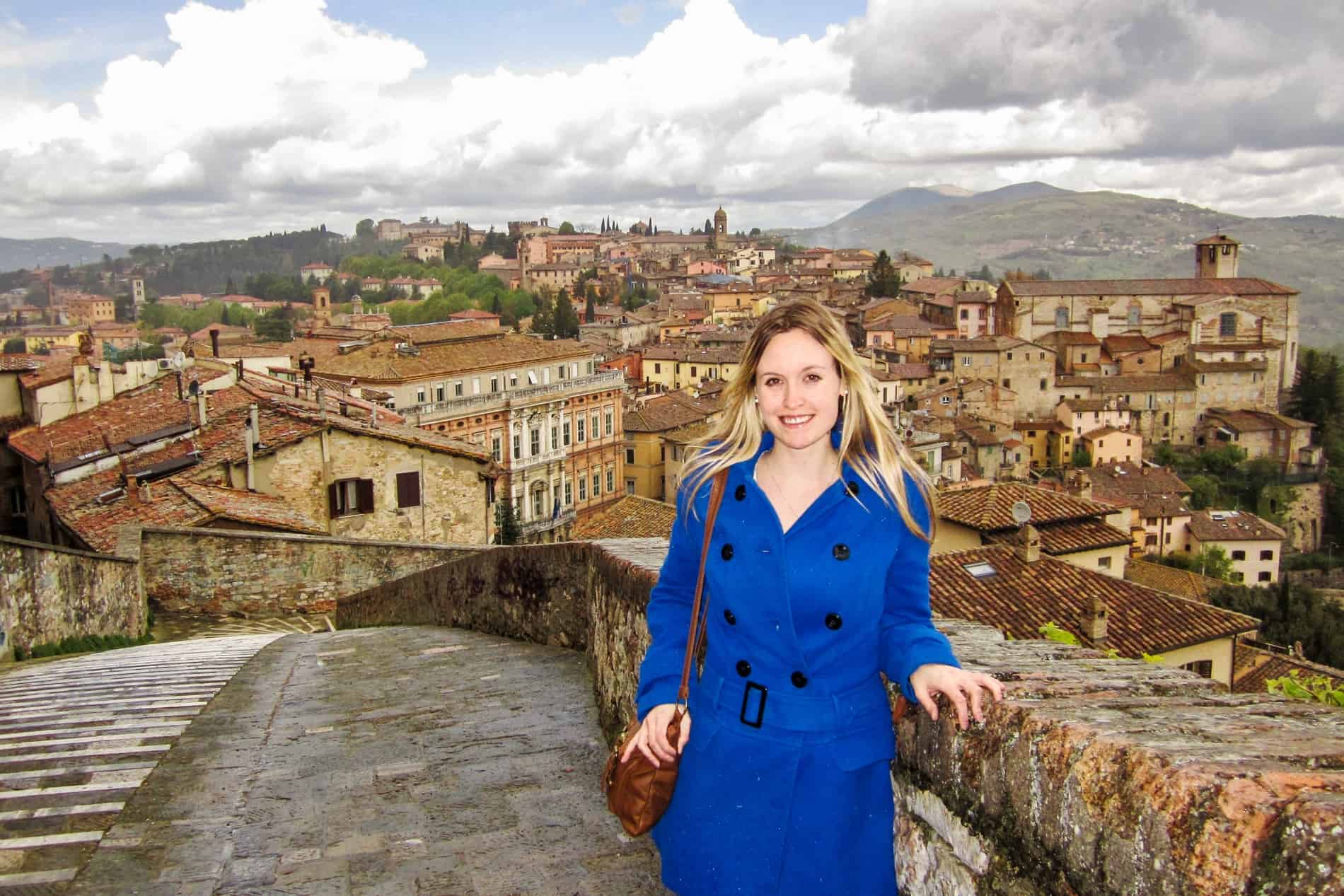
Things to Do in Perugia, Italy – Redefining the Umbrian Capital
Things to Know to Visit Perugia
Perugia may be a compact city, but there are plenty of options to get there and get around. While you can see Perugia in one day, consider an overnight stay to make the most of the experience and to have ample time for visiting galleries and the best vantage points. It’s also a great city to see in the shoulder seasons.
Here are some things to know about visiting Perugia and making the most of your trip.
How to get to Perugia
While international connections are limited, Perugia is easily reached via other Italian travel hubs, should you fly into another city.
Flights to Perugia
Perugia’s international airport, San Francesco d’Assisi Airport (formally Perugia Sant’Egidio Airport), serves direct flights from major European hubs, including London, Barcelona, and Malta. Domestic flights also connect to other Italian cities, including Rome, Pisa and Florence.
Perugia city centre is 30 minutes away from the airport.
Trains to Perugia
Perugia is well connected by train to major Italian cities, limiting the need to fly internally and worth squeezing in if you are on the Italian city-hopping travel route.
- Perugia to Rome train
- Two hours, €15 one way.
- Perugia to Florence train
- One hour and 30 minutes, €15 one way.
- Perugia to Pisa train
- Three hours, €20 one way (via Florence).
- Perugia to Bologna train
- Two hours and 30 minutes, €30 one way. Here’s what to do in Bologna.
- Perugia to Milan train
- Four hours, €50 one way.
Getting Around Perugia
Walk Perugia’s history, but know you have a backup to traverse the giant hill it rests upon.
Sightseeing On Foot
Perugia is an ideal city for walking, where you can also spend extra time getting lost in it’s inner and surrounding alleyways without feeling rushed on time. Walking here means taking on the cobbled streets, sloping hills and tiny steps, so extra stamina is required to cover a lot of ground.
Take the Minimetro
Don’t want to clamber up and down the hill slopes? Take the Minimetro – it connects Perugia railway station (Perugia Fontivegge) and parking areas to the elevated Centro Storico via seven stops.
Best Time to Visit Perugia
For optimal temperatures and mild weather conditions, the best time to go to Perugia is during the Spring months of April to June and the Autumn period in September. July and August – the height of the Italian summer -can be unbearably hot, and the city is quiet as locals retreat elsewhere. Expect heavier rainfall between October to December if you want to visit out of season.
Where to Stay – Hotels in Perugia
Historical centre accommodations are plenty, although many can be in the higher price bracket.
One mid-range option is the Hotel Fortuna – a property with vaulted ceilings and classical touches in a property dating back to 1600. The breakfast room retains the original 16th-century frescos, and the roof terrace is a perfect vantage point over the hilltop citadel. Hotel Priori Secret Garden is a renovated old town property for those looking for modern elegance.
Those who stay at the hill’s foot in the valley can choose from a few agriturismo and rural B&B offerings.
Consider a family-run, farmhouse stay at Agriturismo San Fedele in the Umbrian countryside, stay with local host Giulio at the B&B Il Sognatore close to Perugia train station, or opt for the Relais San Clemente – a converted church from 1045, complete with horse stables and a golf course.
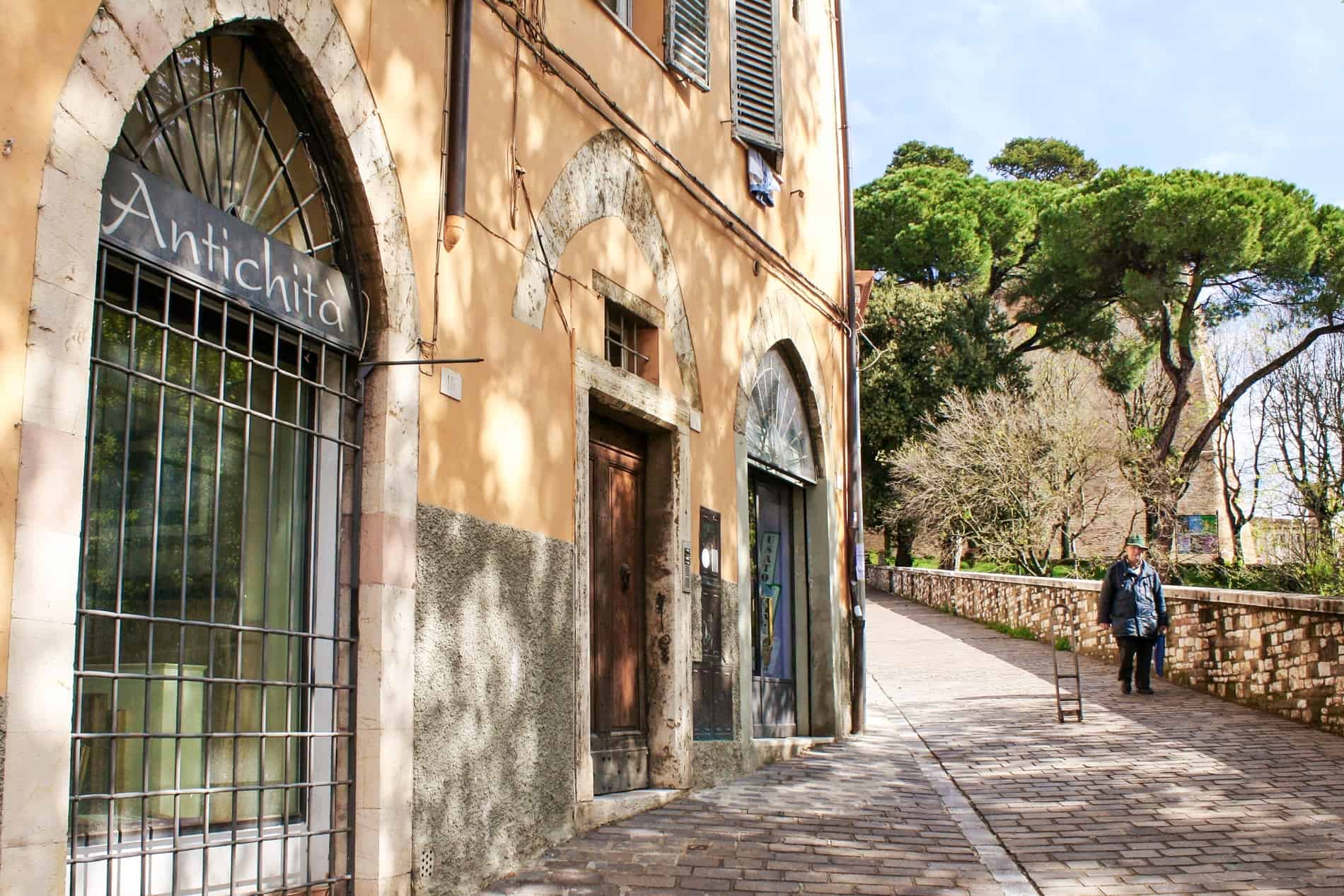
Perugia’s paved path up the historical centre.
Is Perugia Worth Visiting?
Quintessential old Italy, Perugia is postcard pretty. From coloured houses to the vast green Umbrian landscape, the streets are quaint, set to a valley backdrop. Perugia also retains old traditions. As a city that hasn’t lost its character to modernisation, pockets of tradition remain, mainly in the types of local, still family-run businesses you come across and its centuries-old architecture.
Things to Do in Perugia to See it Differently
Perugia is built on hilly terrain. In short, the following quote from an Italian man sitting next to me on my flight sums up Perugia’s layout: “There’s nothing at the bottom. Everything old, historical and beautiful is at the top.”

Old Perugia on top of the hill.
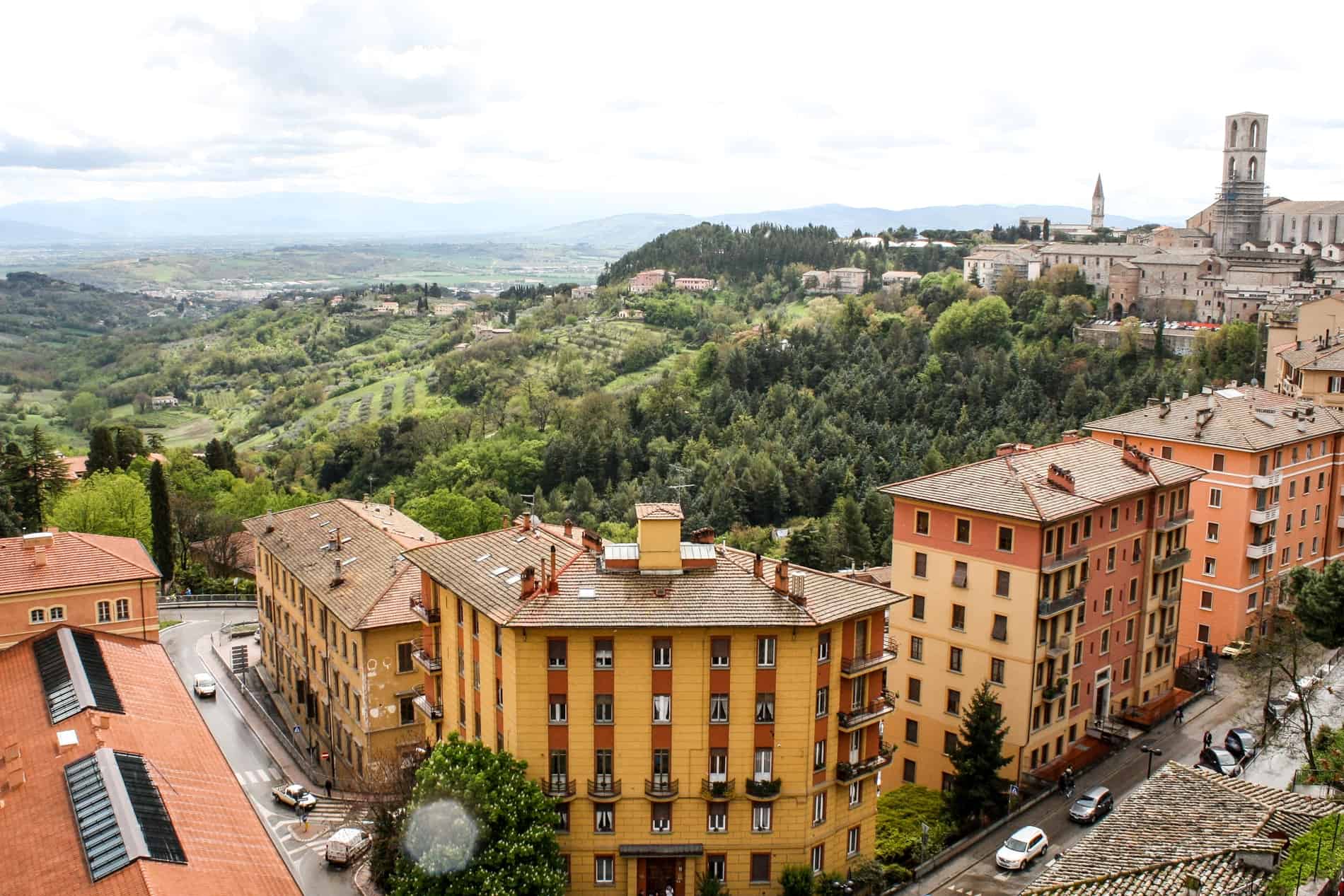
Perugia and the Umbrian countryside.
Paolina Fortress (Rocca Paolina)
Just beneath the hill-set citadel is a vast stone-bricked wall – the lower rampart remains of the Rocca Paolina, also known as the Paolina Fortress. Wander within the foundations of an old self-enclosed town before emerging again into the city’s sunlight. The impressive 3rd-century BC Porta Marzia gate is incorporated into the fortress walls.
There is a complex history surrounding this 16th-century Fortress. In 1540 Pope Paul III called for the Fortress to be constructed – a symbolic, defensive structure built to show dominance and papal power after the insurrection by the city of Perugia against the Papal States, known as the Salt War. Its design, by military architect by Antonio da Sangallo the Younger, destroyed around one-quarter of the medieval city.
It became untouchable until the unification of Italy in 1860, when the locals pulled most of its upper levels down, and the site fell into disrepair.
Today, when you visit what remains of the underground levels, it feels like a half-abandoned place and a ghostly relic of the past. Within the remaining walls are markings of medieval streets covered by brick ceilings, sections of subterranean tunnels, and spaces that were once houses and living spaces. Exhibitions can also be found within, detailing a historical timeline.
Visit Paolina Fortress: Open from 6:15 AM to 1:45 AM. Free admission. A series of escalators connect the site.
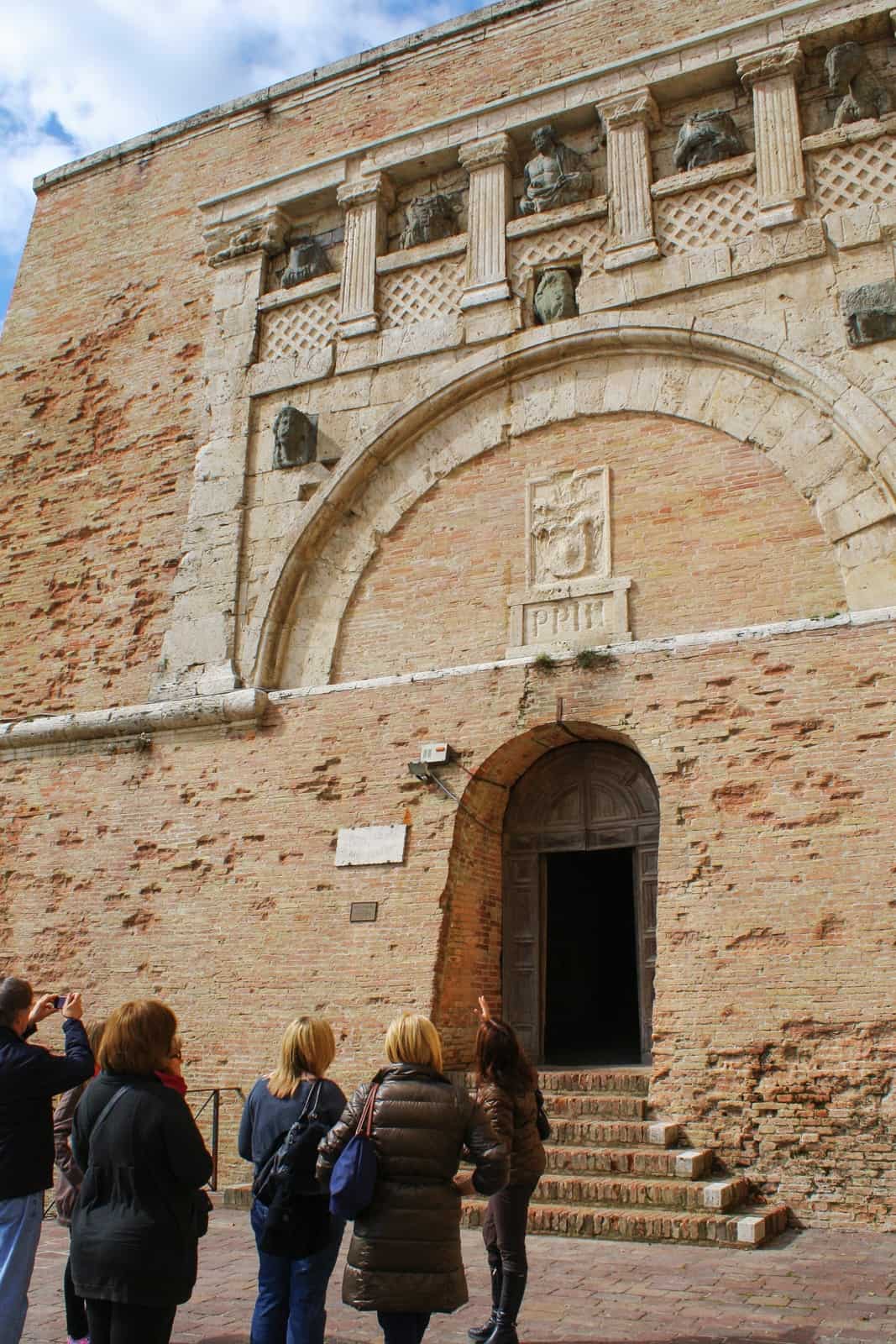
Porta Marzia gate – part of the remains of the Paolina Fortress in Perugia.

Inside the empty Paolina Fortress.
Perugia City Centre
From the Fortress, ascend to Perugia city centre – an old town in dusty, golden yellow stone that overlooks the peaceful Umbrian countryside. Use the main street of Corso Vannucci as a navigation point, with a cluster of historical and cultural landmarks in the main square of Piazza IV Novembre.
The Fontana Maggiore
Perugia’s city symbol, The Fontana Maggiore, is considered a medieval masterpiece in carving. The tiered three-basin pink and white Assisi marble sculpture with columned biblical reliefs was built between 1278 and 1280 as a celebratory centrepiece following the completion of the new aqueduct that brought water to the city from Mt. Pacciano.
You can see the remains of the Aqueduct arches along Via dell’ Acquedotto.
Perugia Cathedral (Duomo di Perugia)
Behind the fountain is the landmark Perugia Cathedral – an architectural complex dedicated to Saint Lorenzo and thus also referred to as the Duomo di San Lorenzo. It is a layering of architectural types over the centuries, from the foundations of a 14th-century church to the expansion into a baroque and neo-gothic style cathedral by the 19th century.
The interior houses vaults of monumental artworks, frescos, and the Chapel of the Holy Ring belonging to the Virgin Mary.
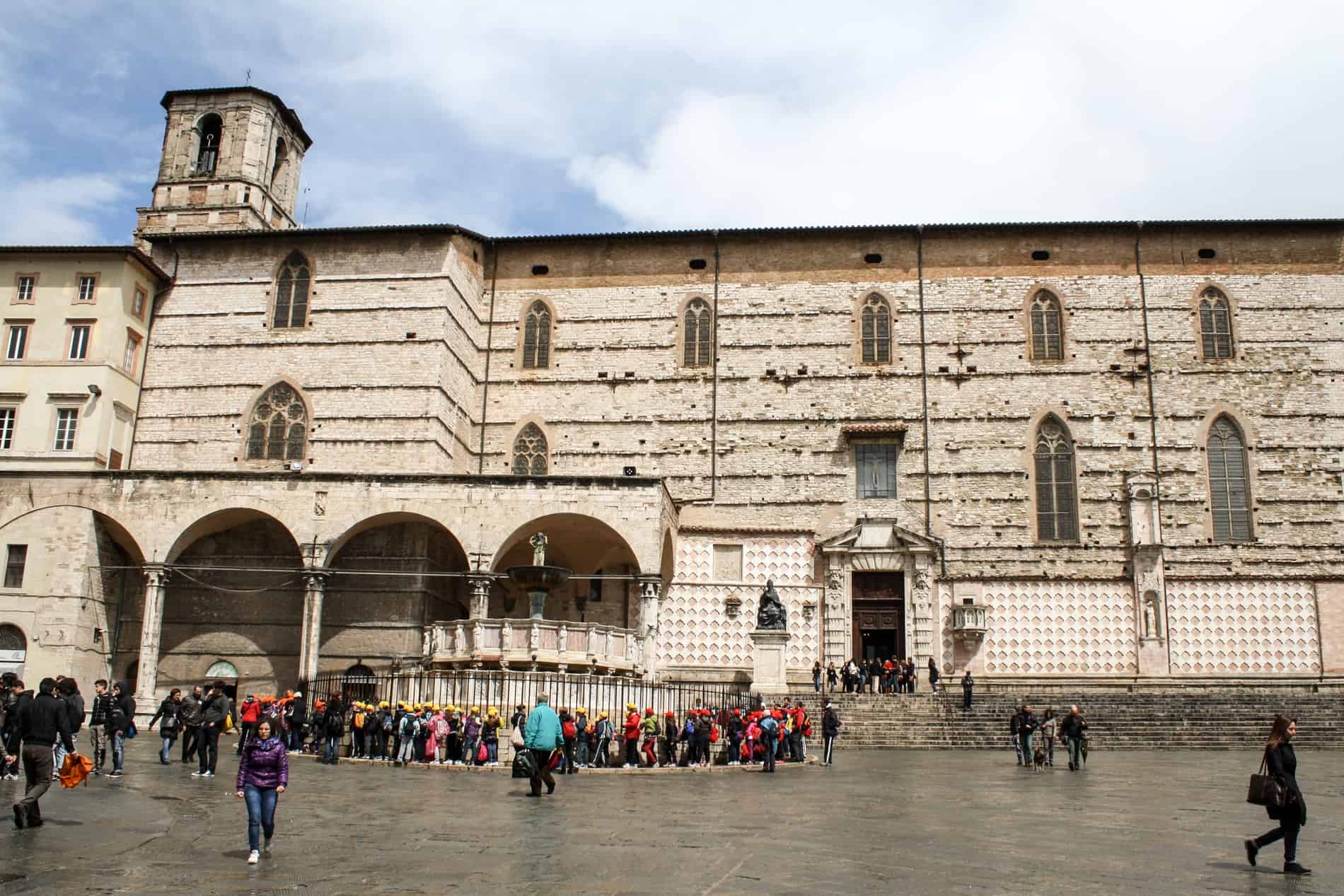
The Fontana Maggiore in front of Perugia Cathedral (Duomo di San Lorenzo).
Palazzo dei Priori and the Galleria Nazionale dell’Umbria
One of the things to do in Perugia is to meander between a host of churches and palaces, but the Palazzo dei Priori is one of the core monuments in the old centre. You can’t miss this 14th-century Gothic structure on the Piazza del Comune, next to Piazza IV Novembre. It continues to serve as the seat of the government and the centre of political life in the city.
It’s also home to one of Italy’s most significant collections of medieval and Renaissance Italian art in the Galleria Nazionale dell’Umbria (National Gallery of Umbria). Over 3,000 works of devotional art gathered from churches, monasteries and private collections are displayed across 40 rooms – an enormous collection of paintings, sculptures, ceramics and textiles spanning the 13th to the 19th centuries.
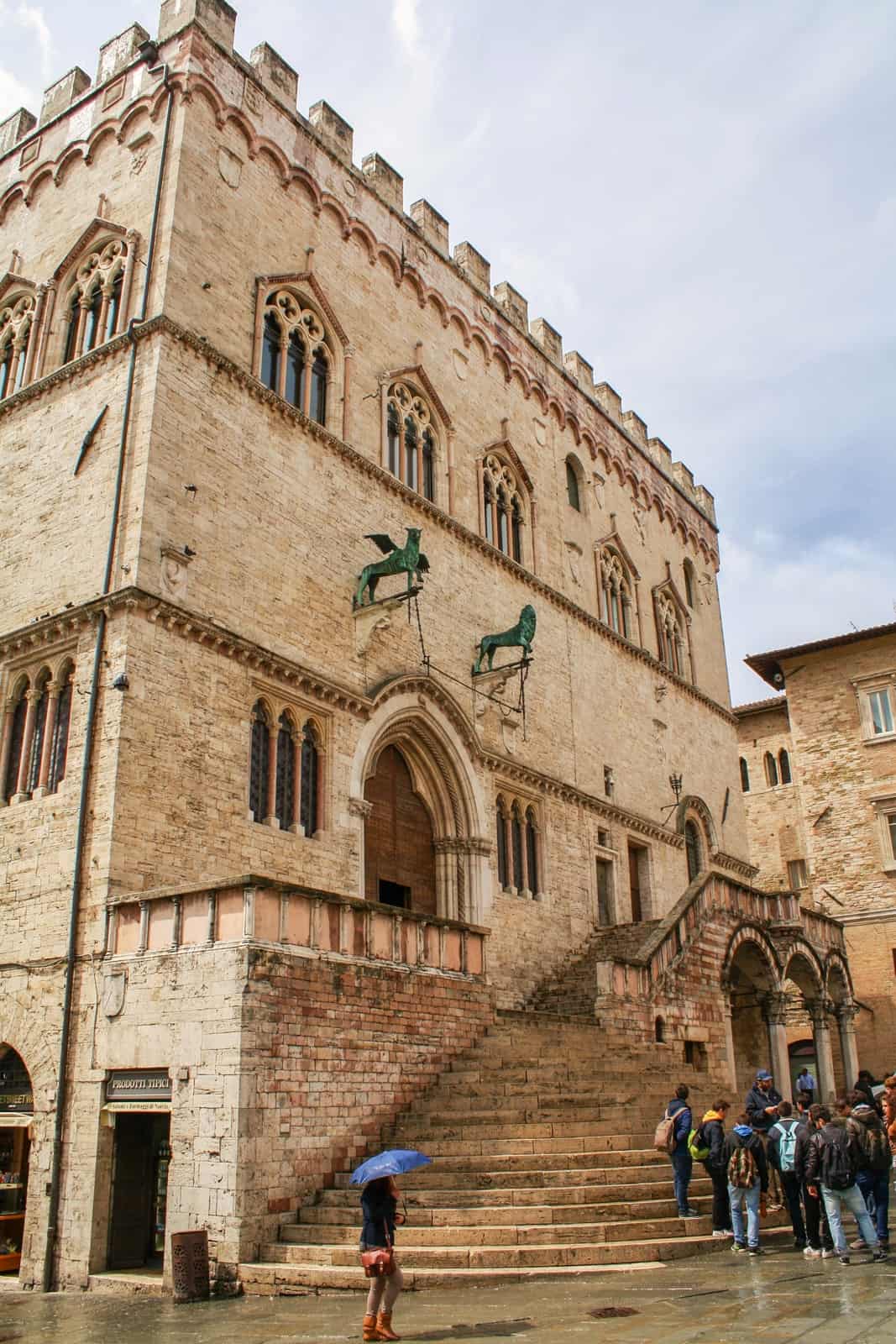
Outside the historic Palazzo dei Priori.
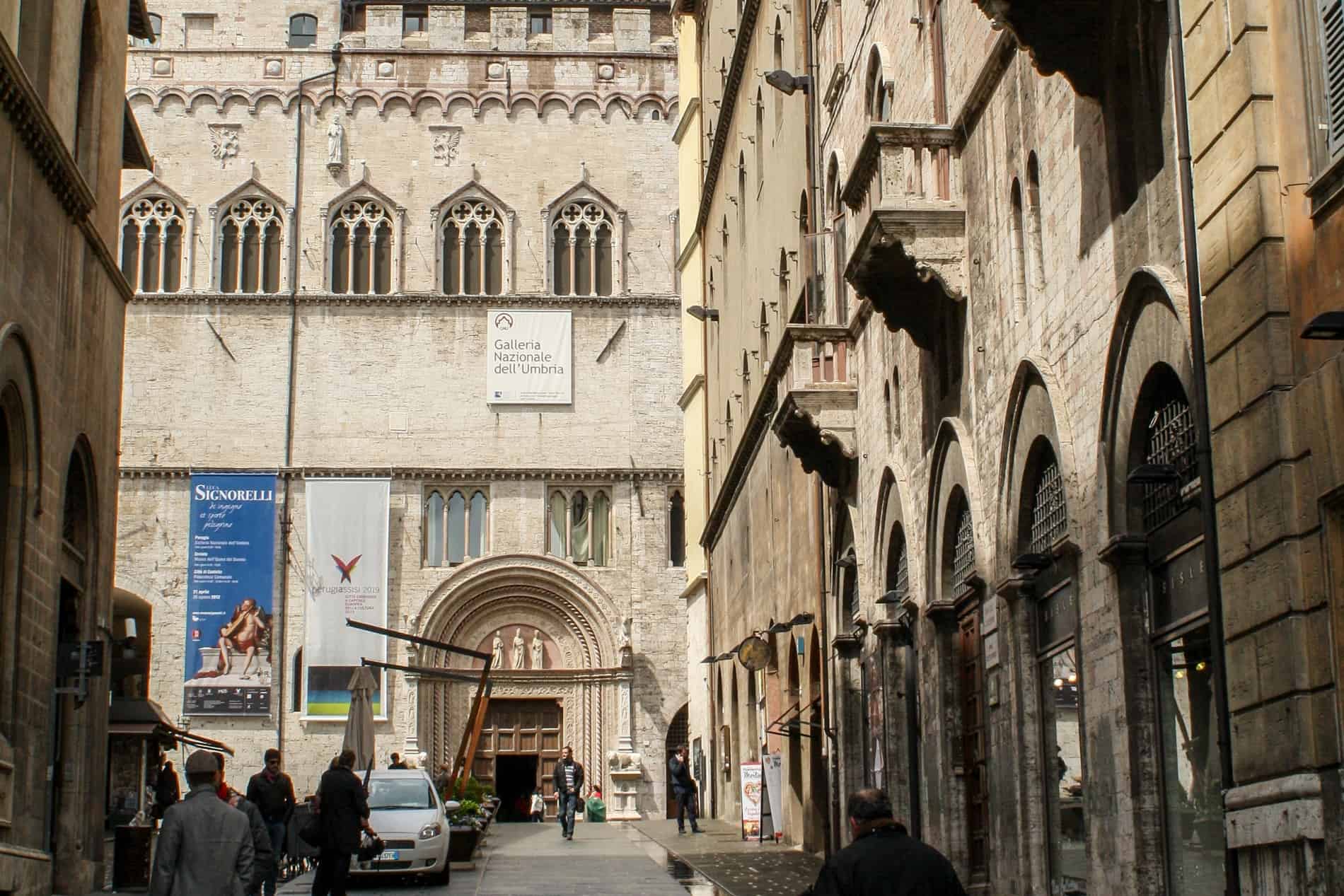
See the collection of paintings in The Galleria Nazionale dell’Umbria (The National Gallery of Umbria).
Life in Perugia Old Town
Whether you are shopping, browsing the artisan street markets, finding cosy restaurants located within ancient archways, or continuing your architectural gazing amongst the balconied townhouses, there’s one aspect of Perugian culture you must indulge in. That is, to hang out in a local Italian coffee shop.
Check out Pasticceria Sandri on the main street. It’s a capsule of ancient times, including the echoing ding of the old tills, operated by a lady who has worked there most of her life.
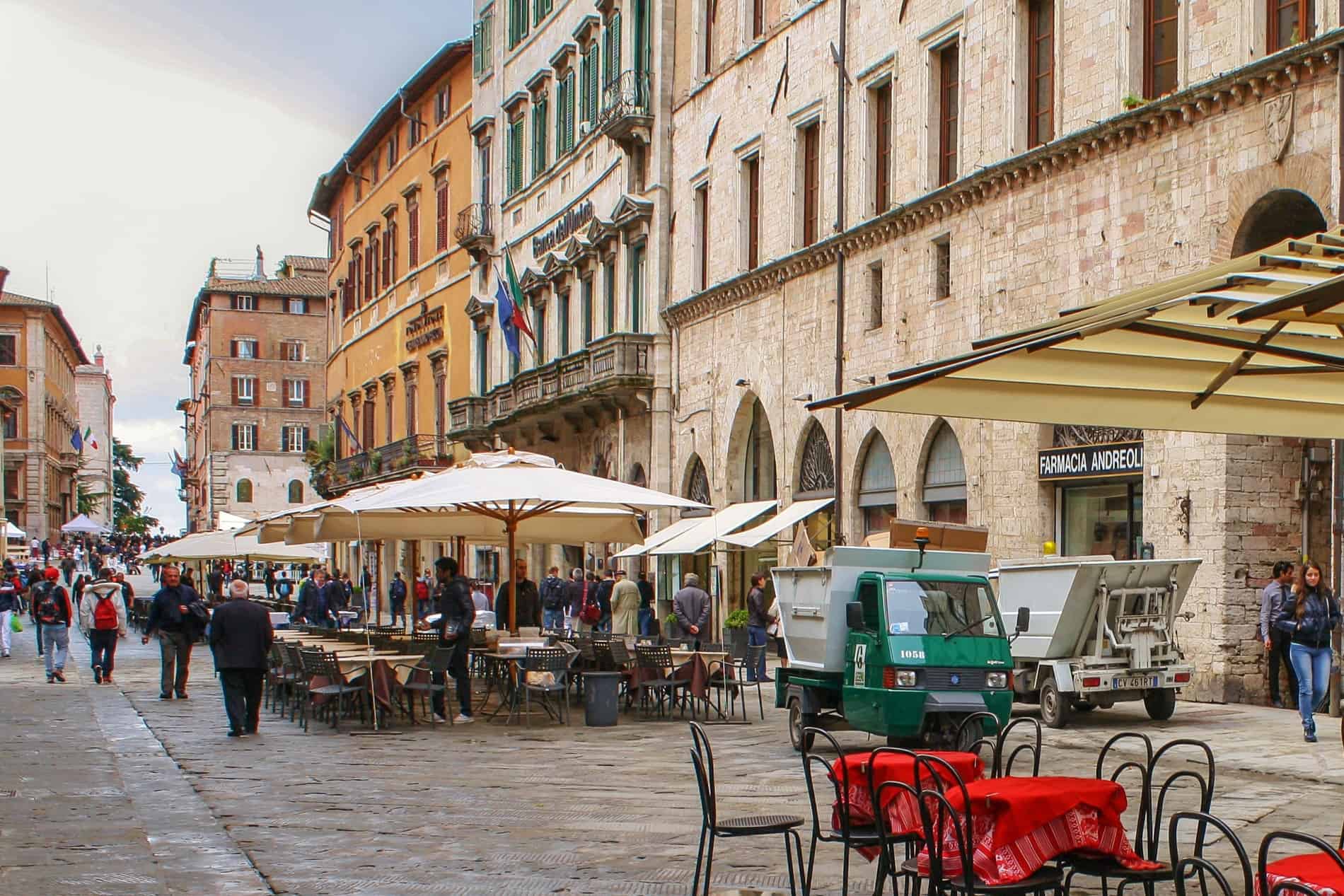
Life in Perugia city centre.
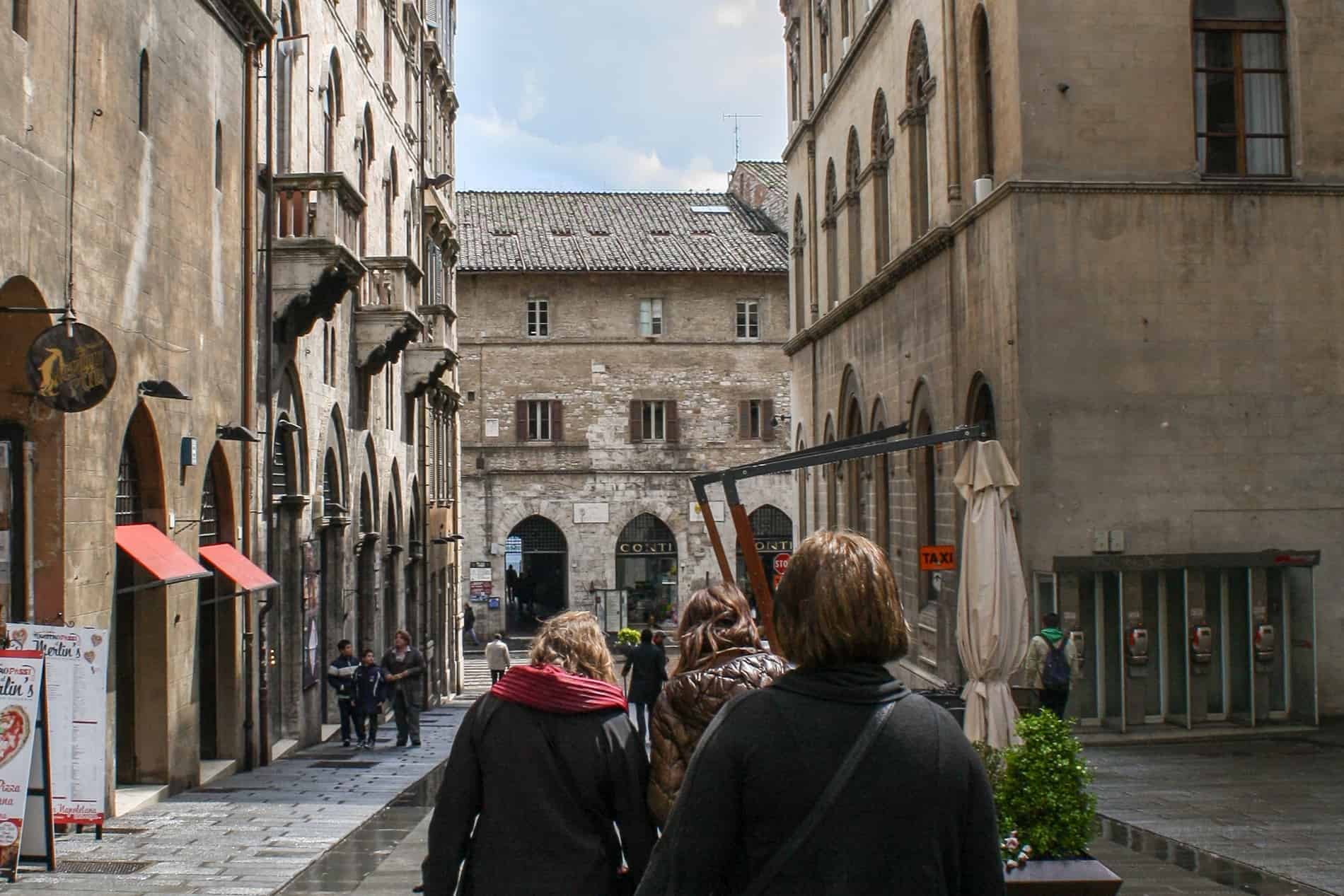
Perugia sightseeing in the city’s old hilltop streets.
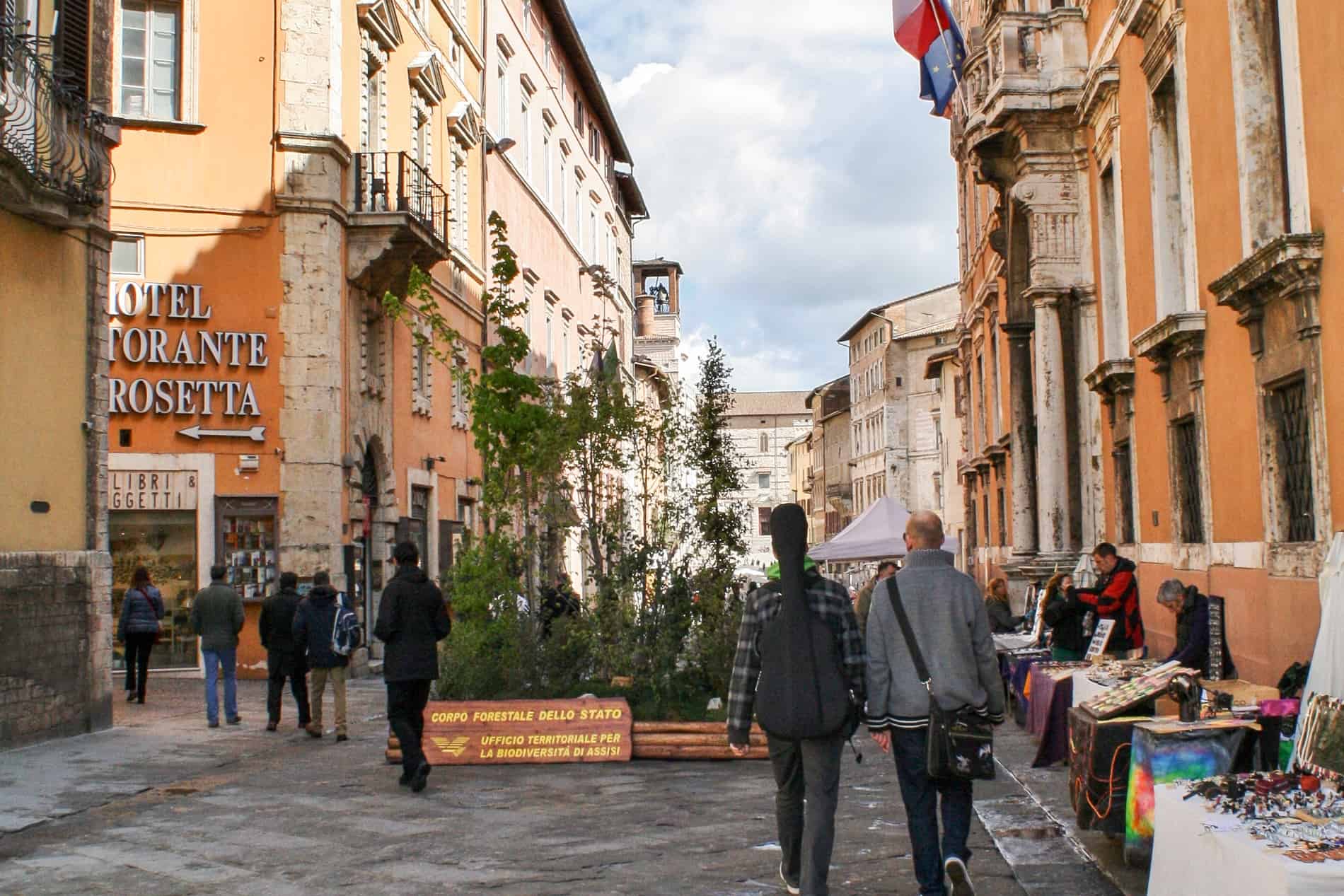
Perugia street markets.
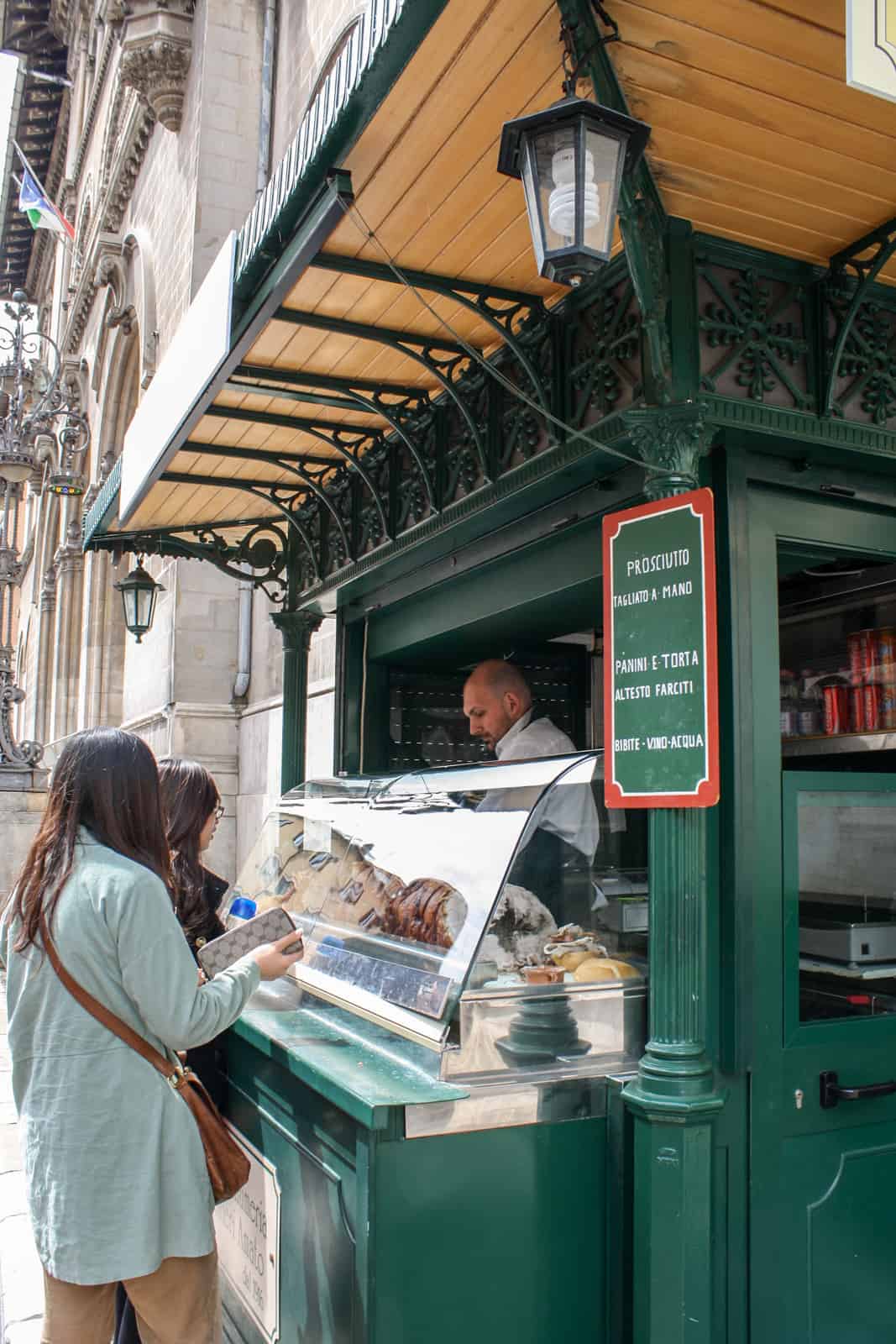
Street side snacks in Perugia.
Take a Perugia Walking Tour
Perugia’s compact space may be easy to get around, but its rich history is best heard from local experts. Those who can present the multi-layers of Perugia’s history from its Roman and Etruscan Ages to a medieval stronghold, its days as a Papel State to the city’s vibrant modern-day persona.
This 2-hour Perugia walking tour takes you through the ancient gates and alleyways and to the major piazzas and palazzos, covering the core historical sites of the old city.
Food lovers wanting to indulge in homemade recipes can enjoy a dining experience at a local’s home or take a market tour to pick up fresh ingredients for a locally hosted cooking class that follows.
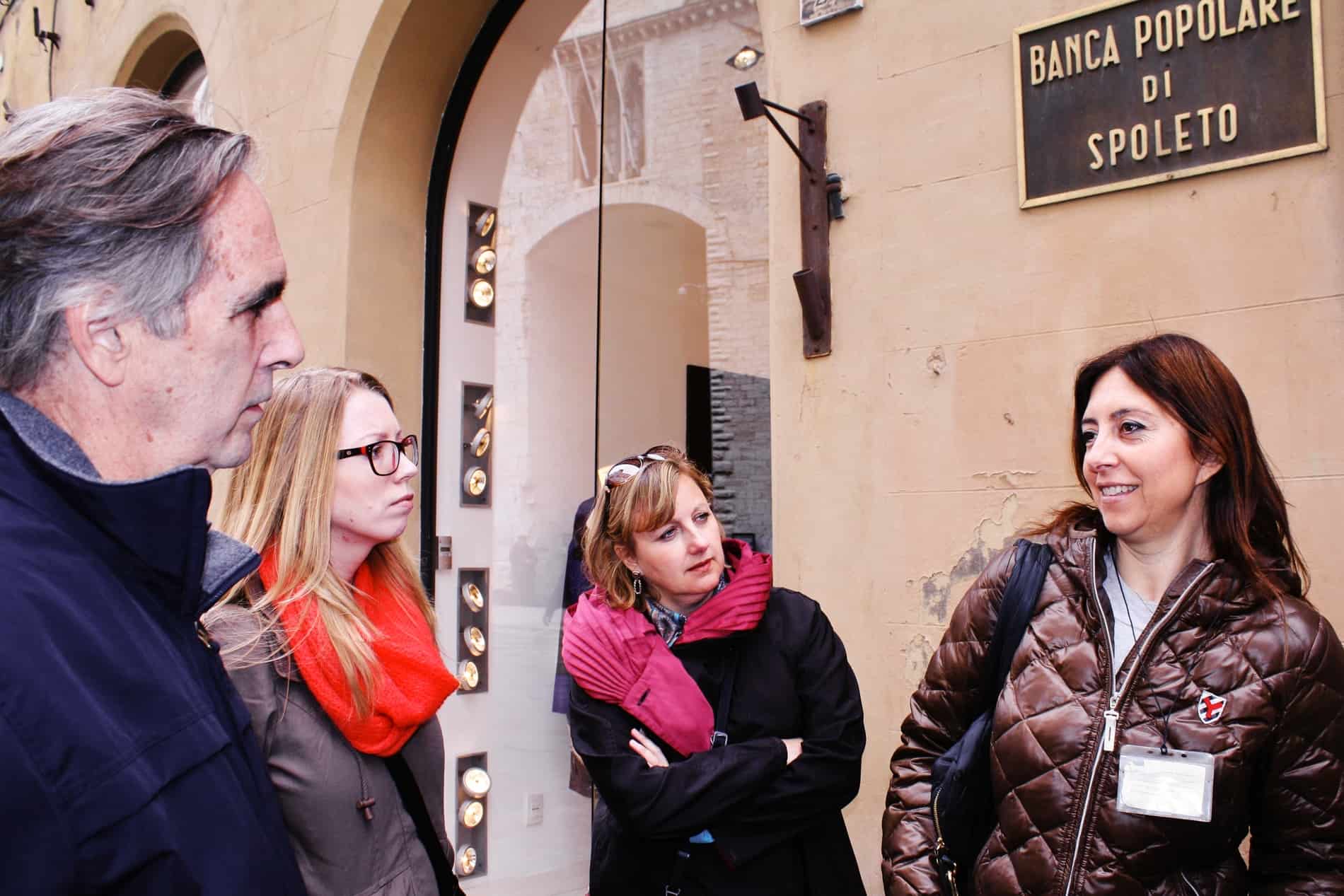
Perugia walking tour with a local guide.
Ride the Minimetro
We ended our day in Perugia on a high by riding the Minimetro. It opened in 2008, but not necessarily to the delight of locals as it’s expensive to them at 1 Euro 50 cents a ticket. It is an accessible route for visitors, connecting the high city to the train and bus stations below. Make time to factor in a ride on the rollercoaster-like train ride, just as we did.
A single line with seven stations, the Minimetro of Perugia is a great way to navigate the city if you are tired of the hike or short on time. You can ride from bottom to top or top to bottom on a journey that takes around 20 minutes.
The tiny carriage ride began with a steep climb, accompanied by a massive gasp of the significant drop about to unfold before us, only to be met by a flat track. But childish giggles filled the air when it sped up a little as it went downhill.
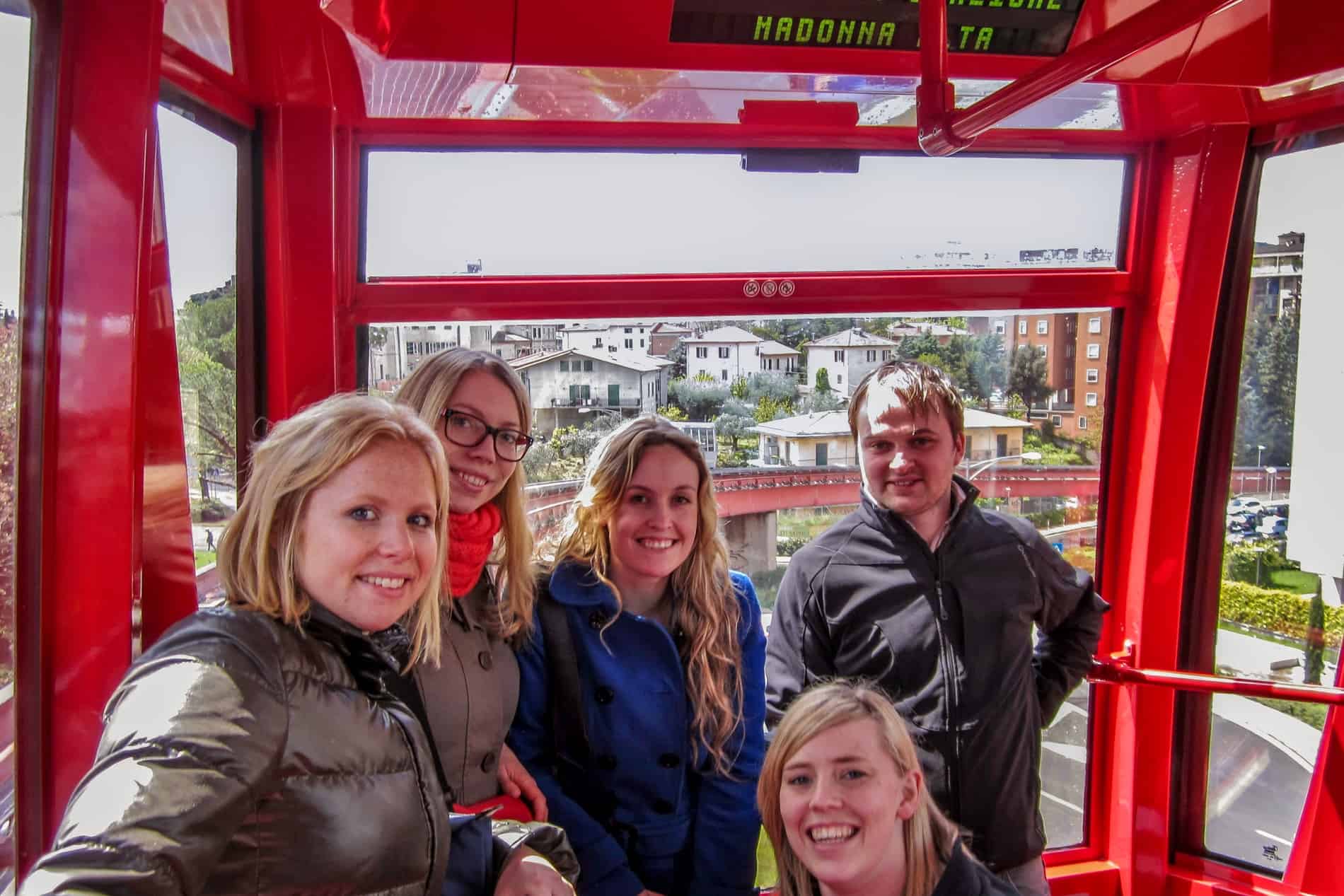
Views from Perugia’s minimetro.
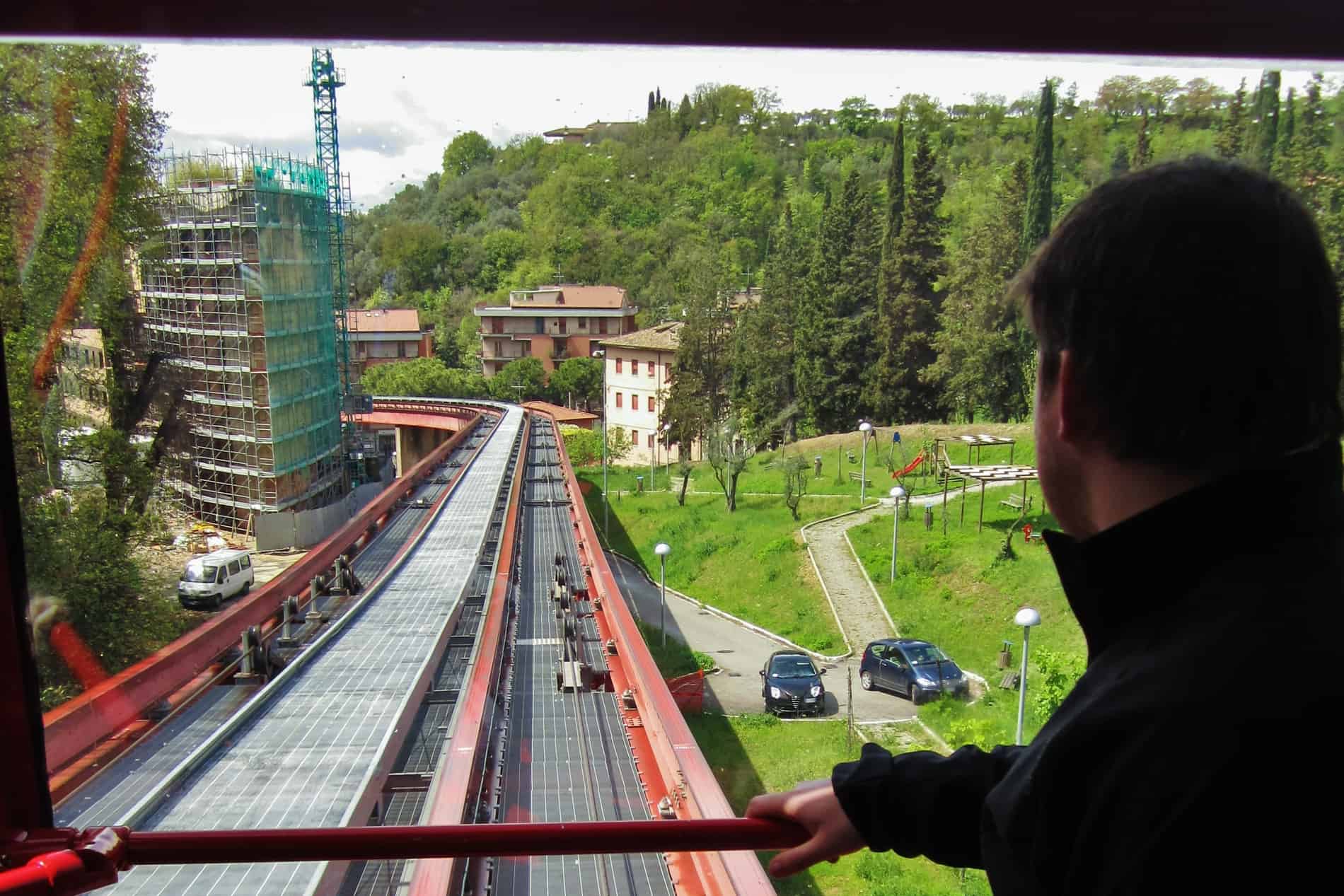
The tiny tracks of the Perugia Minimetro.
Day Trip from Perugia to Assisi
From ancient torn-down fortresses, a beautiful city centre, and panoramic view walks to the hilltops, Perugia is an excellent addition to your Italian itinerary and the ideal starting point for a broader visit to the Umbria region.
It is also ideally twinned with a trip to Assisi – a hilltop town east of Perugia known for its spiritual legacy as the birthplace of Saint Francis. The town was devasted by the earthquake of 1997 that massively struck the Basilica of Francis of Assisi in particular and, in the years following, enduringly rebuilt its legacy.
However, not everyone visits on a pilgrimage – the town is another charming hamlet of cobblestone street strolls through basilicas and medieval fortifications, making it a perfect day trip from Perugia.
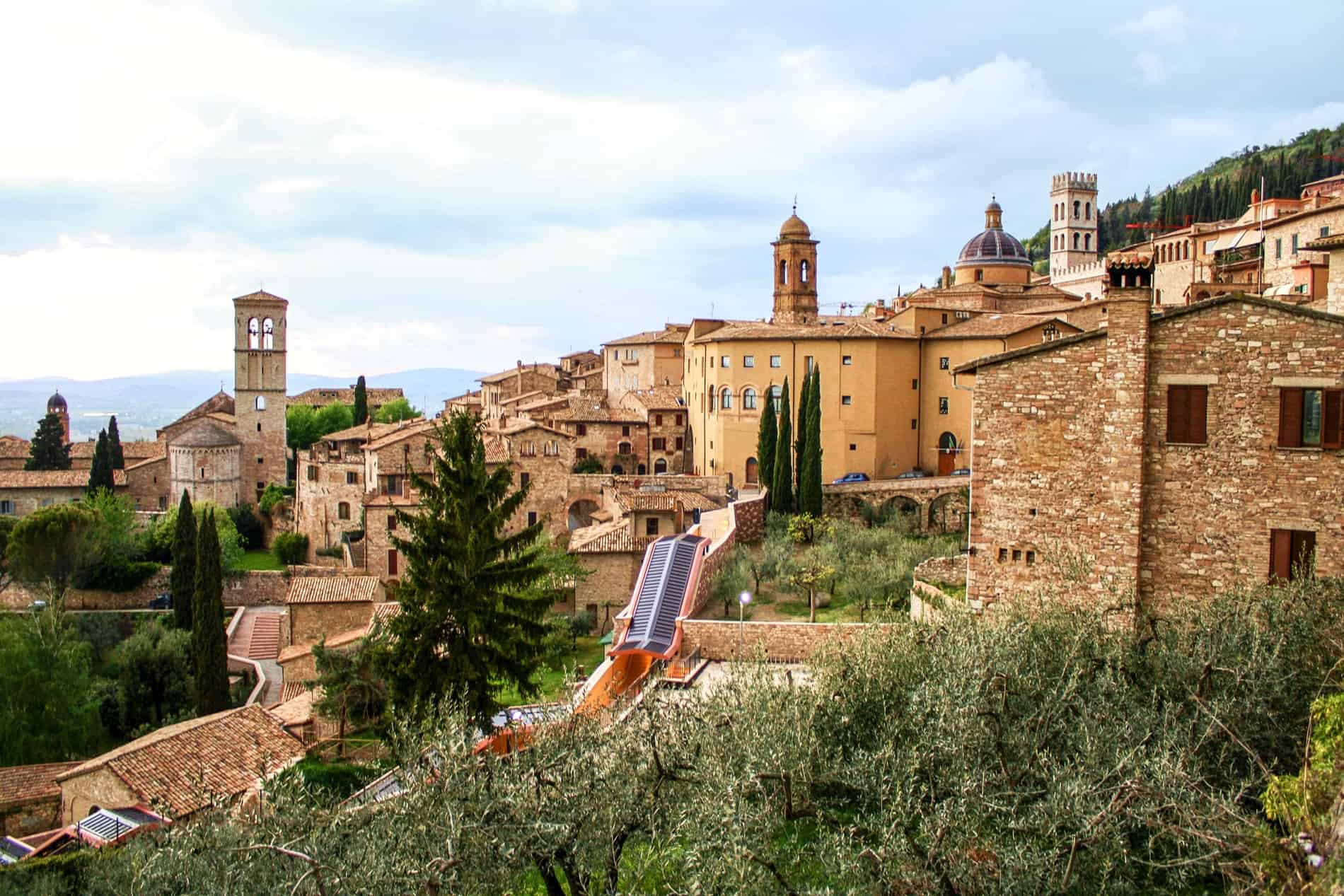
Visit the neighbouring Umbria hilltop town of Assisi.


Simone Robinson says
My great grandfather was from Perugia, born 1886. He was a sculptor named Otillio Pesci. I am writing a book that included his early life in Perugia but have no family information. Do you have any idea where I can find information?
Becki says
I’m sorry, I wouldn’t know that. I would suggest trying to contact the The State Archives of Perugia. State Archives helped in Ireland when I was trying to find my family.
Maria Teresa says
Thanks for all the wonderful information. Visiting Perugia soon.
Oluwatobi says
This is wonderful. I’m heading to Perugia in a few weeks time and I’m so excited. Thanks for sharing!